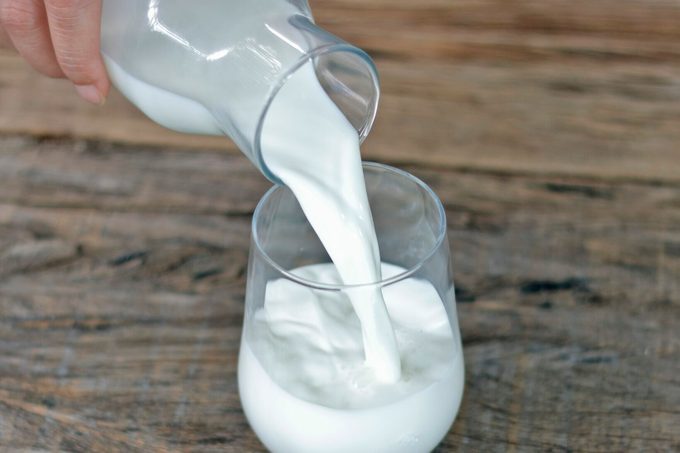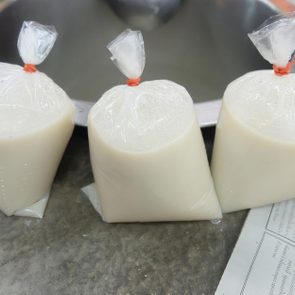Why is milk not refrigerated in Europe? We have the answers.

Here’s the Reason Why Americans Refrigerate Milk and Europeans Don’t

Ask for a glass of milk in an American home, and your host will likely pull an ice-cold gallon out of the fridge. But if you do the same in a European country, the person might reach into the cupboard, open a new box of milk and pour you a room-temperature glass. Wait, what? Why is milk not refrigerated in Europe?
It’s a mystery, all right … and a potential worry. After all, you don’t want to get food poisoning on your next vacation to Italy, France or wherever else. As part of our quest to get to the bottom of surprising food facts, we dug into why people store milk differently across the pond. Read on to learn the real reason milk is not kept in the fridge in Europe—and whether it’s a safe way to sip this staple.
Get Reader’s Digest’s Read Up newsletter for more food news, humor, cleaning, travel, tech and fun facts all week long.
Why is milk in Europe not stored in the fridge?

Believe it or not, until milk is opened, it doesn’t need to be refrigerated. And get this—most of the world doesn’t store unopened milk in the fridge!
But that doesn’t mean you can get away with this type of milk storage As it turns out, the major difference lies in the method by which milk is processed. Almost all milk is pasteurized, meaning it undergoes extreme heat to kill illness-causing bacteria. The United States and Canada use a pasteurizing the technique called high-temperature short-time pasteurization, or HTST. On the plus side, HTST is cheaper and more efficient because it processes milk in larger batches. But as a result, American milk has a shorter shelf life—around seven to 10 days—and must be refrigerated.
Meanwhile, the rest of the world uses ultra-high-temperature or ultra-heat-treated pasteurization (UHT), which heats the milk to an even higher temperature than HTST. The result: Shelf-stable milk that stays fresh outside of the fridge for about three months. So that answers the question “Why is milk not refrigerated in Europe?” It doesn’t have to be refrigerated to be safe to drink!
Why doesn’t the U.S. use UHT milk?
In the early 1990s, one company attempted to sell UHT milk on American shelves, but it never caught on. Why? For starters, the high temperatures make UHT milk taste a bit more “cooked” than HTST milk. But Americans’ obsession with refrigeration is largely to blame—we like things cold and also really worry that milk that’s not cold isn’t actually safe. (It is a lot to get your head around!)
So forget about whether you consider your glass half full or half empty. The real debate lies in whether you like it warm or cold.
Why trust us
At Reader’s Digest, we’re committed to producing high-quality content by writers with expertise and experience in their field in consultation with relevant, qualified experts. We rely on reputable primary sources, including government and professional organizations and academic institutions as well as our writers’ personal experiences where appropriate. We verify all facts and data, back them with credible sourcing and revisit them over time to ensure they remain accurate and up to date. Read more about our team, our contributors and our editorial policies.
Sources:
- International Dairy Foods Association: “Pasteurization”
- U.S. Dairy: “What is Ultra-Pasteurized Milk?”
- Encyclopedia.com: “Parmalat Finanziaria SpA”























